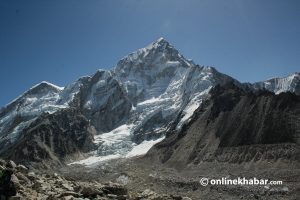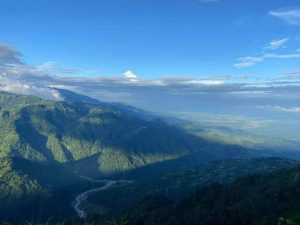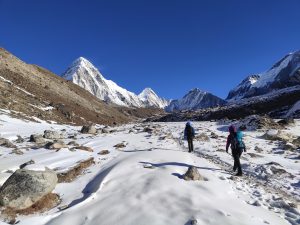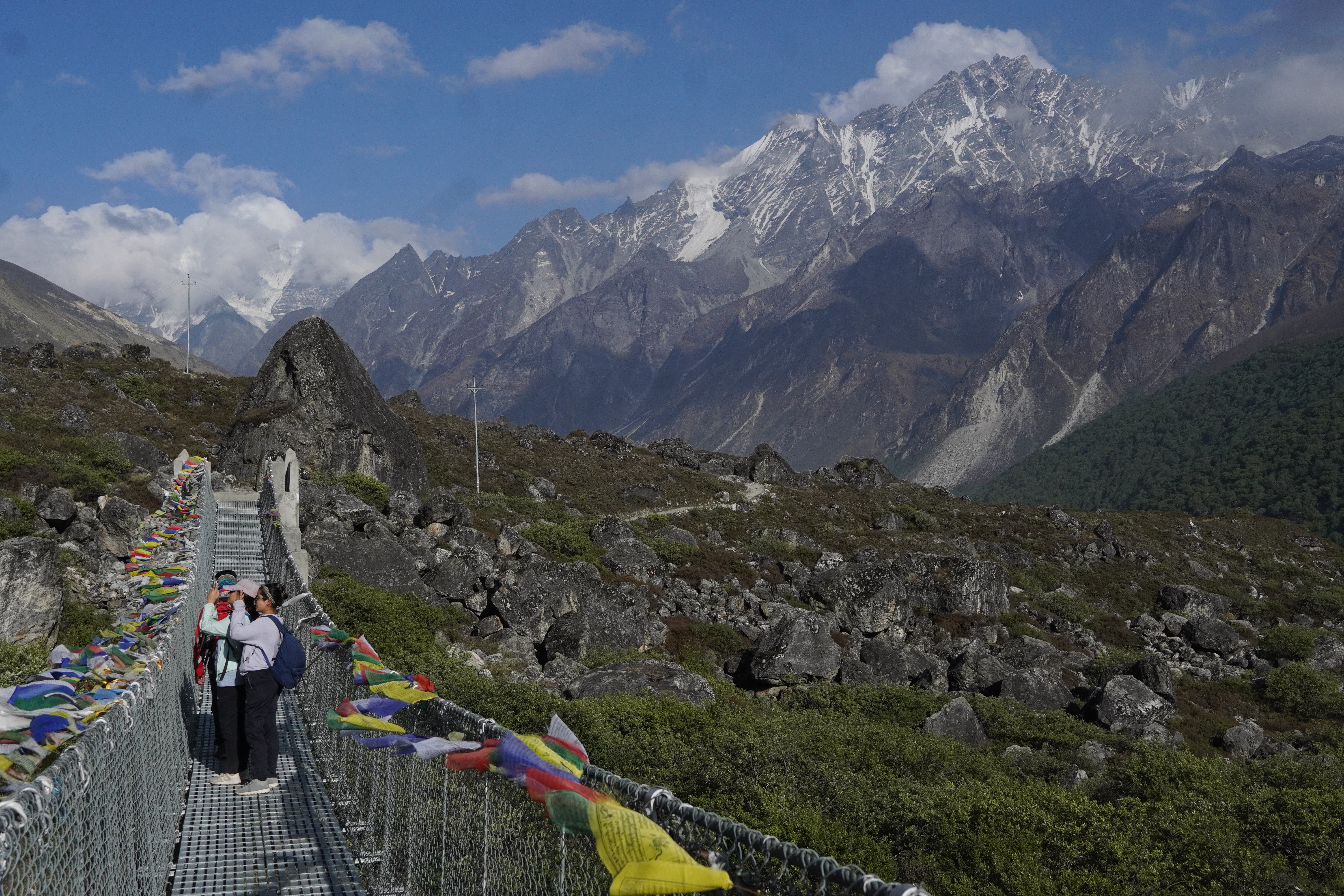
On June 8, my friends Jesson, Aashraya, and I met up at Reader’s Hub, as we usually do on Saturdays. There, we saw Neelam, Riya, and Sanskriti, also known as Sans, making plans for an impromptu trek to Langtang Valley in Rasuwa on June 9. While Neelam was uncertain about the sudden plan to head to Langtang, Riya and Sans were beyond excited. Their energy quickly spread to us, and Jesson, Aashraya, and I were eager to join them on this journey. Bharat, who had injured his leg, could not join us but motivated all six of us enough to go on the trip.
However, there was a small catch. I could not leave on June 9 due to some commitments, so I asked if it was okay to leave on Monday instead. Everyone agreed. We shopped for clothes and other essentials in Thamel for the trip and booked a vehicle to take us to Syabrubesi on June 10.
The trip day

Syabrubesi is not too far, roughly 100 km from Kathmandu Valley. It can be reached by either a bus or a shared SUV from Machhapokhari, but we opted to book a private SUV for convenience and to save time.
The road to Syabrubesi via Tokha and Bidur was quite smooth. Except for a few areas, the roads were fine, and we reached Syabrubesi around 1 pm, taking about five hours. If you want to, you can drive either your motorbike or car to Syabrubesi. The roads are good, and the scenery becomes quite picturesque as you climb up from Nuwakot to Rasuwa.
Syabrubesi is the gateway to Langtang. It is a small town near the Nepal-China border, situated on the banks of the Bhote Koshi River at an altitude of 2,380 meters above sea level. This is where they trek to Langtang valley and Kyanjin Gumba begins.
With no time to waste, we began hiking up to Langtang Valley on the very first day. As it was just past midday, the sun was at its peak, sapping every ounce of energy from us. What made it worse was that we had barely carried any water. Within the first hour, I felt extremely dehydrated and tired. Respite came in the form of the first tea house, where we stopped for some water and carbonated drinks. Refreshed, we continued on our way to Bamboo, our overnight stop.
At Bamboo, we spent the night at Hotel Tibet Guest House. The place was simple and neat, and since it falls directly under national park control, it does not have many amenities, but it does the job. As we settled down, we met wildlife photographer Bikash Thakuri, who was there with two Americans, aiming to capture photos of the red panda and danfe. I do not know whether they were successful. Bikash is a loud and fun person, and listening to his experiences as a wildlife photographer created a sense of joy and laughter among us.
Feeling gypsy
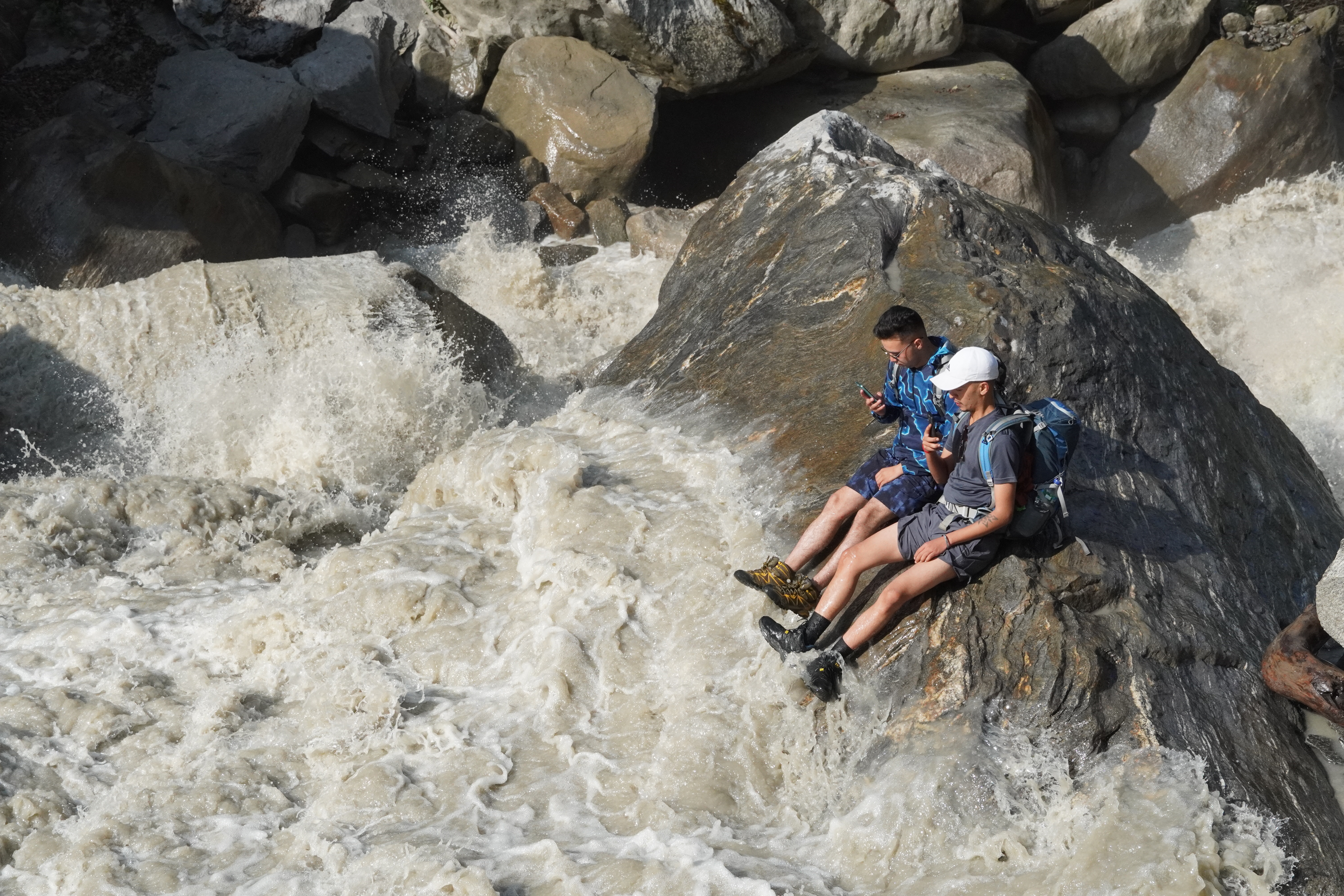
The second day was going to be our hardest. Since not all of us were avid hikers or trekkers, we were unsure how far we could go as a group. However, with a positive attitude, we soldiered on.
Although it was a bit hot, it was a great day. It was then that we realised that trekking is not just about reaching a destination; it is more about the journey and the memories we make with our friends. We embraced this mindset, stopping to take photos, resting by the Langtang River, and clicking even more photos on the piles of rocks on the riverbed. By the time we got to a rest stop called Riverside, we were famished.
The homely cooked meal filled our stomachs and souls, as did the sound of the Langtang River that had been a constant presence since we left Syabrubesi a day earlier.
We rested there for about an hour before starting to walk again, without deciding where to stay for the night. At 5 pm, we reached Ghoda Tabela and met Dindu Lama, the ward chair of Gosaikunda Rural Municipality 4, on the way. He invited us to stay at his hotel, the Tibetan Hotel. Since we were already tired and had not decided where to stay, we agreed to his offer. Outside the hotel, Aashraya, Jesson, and I were lucky enough to spot some ghorals (mountain goats). That filled us with joy and excitement of what is to come in the coming days around Langtang Valley.
Before entering the hotel, we decided to spend a little more time in an open space near the hotel, which was surrounded by beautiful hills. We relaxed on the grass, gazing at the hills with the same longing and admiration one feels for a cherished love. As the cold started to set in, we slowly made our way to the hotel.
At the hotel, Lama talked about the socio-political context of his ward. He mentioned the necessity of transportation facilities throughout the village but also expressed concerns about businesses that rely solely on trekkers.
“If people begin to use vehicles for travel, businesses catering to trekkers will incur losses,” he says.
Finding the balance is going to be tricky in Langtang as the place has to learn from what has happened in other places in Nepal.
The next morning, after having thukpa for breakfast, we began our trek towards Kyanjin Gompa around 9 am. The trail from Ghoda Tabela to Kyangjin Gumba is quite straightforward. It is scenic, with the path winding through a valley full of rhododendron trees and offering views of mountains on various sides. Taking in all the views, we reached Langtang village around 2.30 pm where we stopped for lunch. This lunch was special for us as it was Riya who cooked for all of us. The hotel owner was sweet enough to allow us to do so. After a while, we were on our way to Kyanjin Gumba.
Before reaching Kyangjin, we came across a lovely open space with a beautiful stream. We spent some time playing in the water, feeling like we were in our early teens, living our best lives without a care in the world. Even though we were tired, we felt free, and most importantly, we were together.
At an altitude of 3,860 meters, Kyangjin Gompa is nestled in a valley surrounded by mountains and towering hills. The village, however, is unlike what you would expect at such an altitude and so far away. In places where there are no transportation facilities, we do not expect to see modern buildings. However, Kyangjin Gumba is exceptional in this context. The place is full of modern and large buildings, which surprised all of us.
By the time we arrived, we were tired and did not feel like eating. All we wanted to do was sleep. However, since we had to start early and climb up to Kyanjin Ri, which is located at 4,200 metres, we reluctantly ate. We also drank the refreshing sea buckthorn juice, a local berry juice mostly found in the mountainous regions of Nepal. This juice eases tiredness and provides energy. It is like a natural energy drink and can be bought for between Rs 200 and Rs 300, depending on where you purchase it.
Final destination
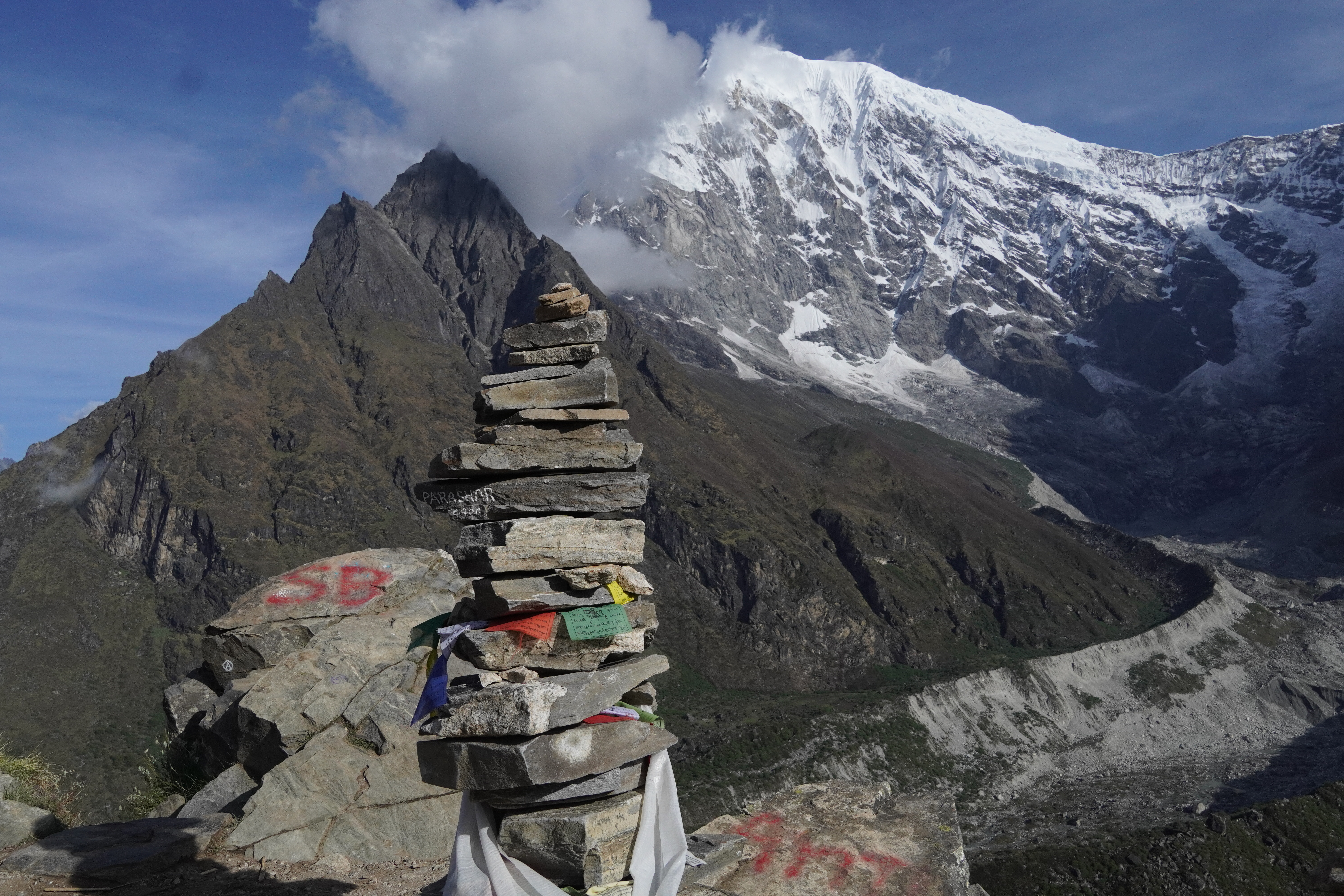
The next morning was the day to reach our final destination. We began our journey to Kyanjin Ri at 5 am. We started early because fellow trekkers who had previously climbed Kyanjin Ri suggested that reaching the summit early enhances the beauty of the view. Waiting too long could lead to fog and strong winds that might obscure the scenery.
The path to Kyanjin Ri is steep throughout. After two and a half hours of trekking, we reached the top. The view from Kyanjin Ri was not just beautiful; it was breathtaking. The sight of the majestic mountains and purple wildflowers washed away all the tiredness from three days of continuous walking.
An off-season beauty
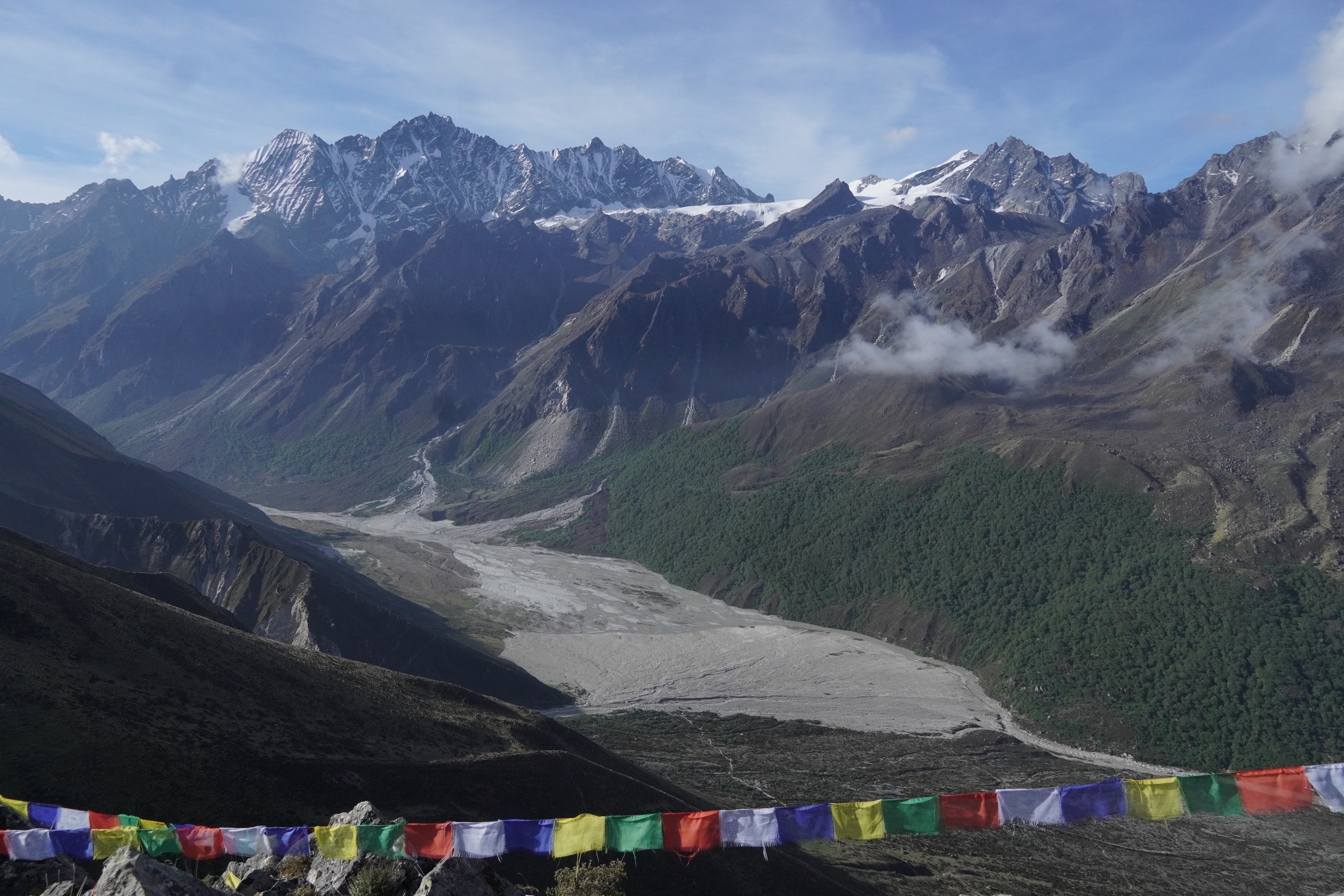
I never thought I would ever go to Langtang. There were other destinations on my bucket list, but Langtang was not one of them. However, I am glad that I made the impromptu decision to go there, especially during the off-season as the monsoon was approaching. We were all relieved and grateful that the weather remained clear and it did not rain, despite the weather forecast predicting showers throughout our entire trip. It felt as though a higher power was smiling down on us, blessing us with clear skies and allowing us to fully immerse ourselves in the breathtaking beauty of Langtang Valley.
Trekking during the offseason made me realise the advantages that it offers. Firstly, there are fewer people, which fulfilled my desire to escape from the chaos of Kathmandu. Secondly, finding accommodations is much easier. During the peak season, booking hotels in advance is necessary, but during the offseason, we do not have to deal with such hassles.
There are also financial benefits to trekking during the offseason. During the peak season, prices for everything are significantly higher. Hotel owners and other businesses along the trail are less likely to negotiate prices. However, during the offseason, the scenario changes. Prices are generally lower, and if you have good bargaining skills, you can find things or services at even lower prices.
Additionally, the tranquil atmosphere of the offseason allows for a more intimate and authentic experience with nature.
A personal note
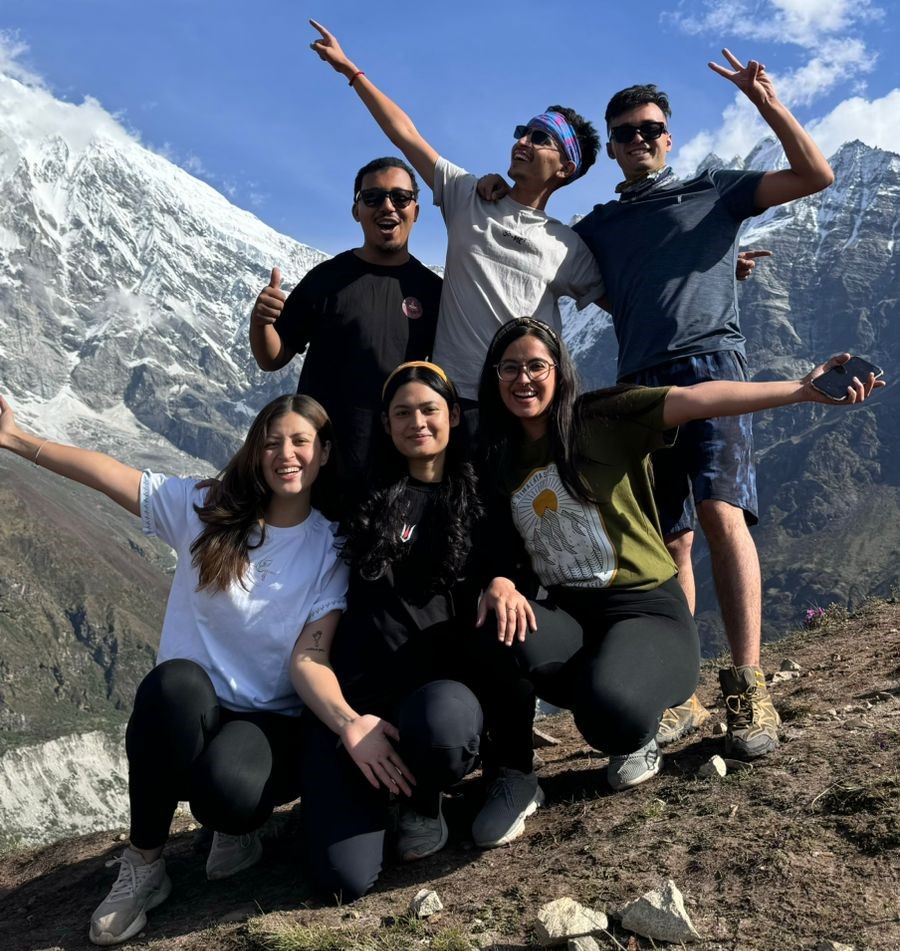
(L-R) Back Row: Prasun, Jesson and Aashraya
Travelling to Langtang for me was more than just exploring new places, meeting new people, and trying different foods. It also turned out to be a journey that significantly improved my mental well-being, which had been struggling for a while.
Among the various aspects that made this trek successful and joyous, the best thing was the companionship of my friends. Their support, conversations and laughter made the trek truly memorable, and I am deeply grateful to all of them.
Among all of us, I was the one who walked slowly and arrived last at almost every place. At times, it felt as if I was travelling solo. However, that feeling never lasted long because my friends were always waiting for me, cheering me on to stay energised throughout the journey.
And, of course, I should not forget to mention the frequent funny phone calls from Bharat in Kathmandu, driven by his fear of missing out (FOMO), which added an extra layer of interest to our journey.
Overall, in terms of difficulty level, Langtang can be considered moderate for beginners. If you’re new to trekking and looking for a suitable option, Langtang can be an excellent choice.









